Emma Fitzgerald
IoT on the Road to Sustainability: Vehicle or Bandit?
May 31, 2024Abstract:The Internet of Things (IoT) can support the evolution towards a digital and green future. However, the introduction of the technology clearly has in itself a direct adverse ecological impact. This paper assesses this impact at both the IoT-node and at the network side. For the nodes, we show that the electronics production of devices comes with a carbon footprint that can be much higher than during operation phase. We highlight that the inclusion of IoT support in existing cellular networks comes with a significant ecological penalty, raising overall energy consumption by more than 15%. These results call for novel design approaches for the nodes and for early consideration of the support for IoT in future networks. Raising the 'Vehicle or bandit?' question on the nature of IoT in the broader sense of sustainability, we illustrate the need for multidisciplinary cooperation to steer applications in desirable directions.
Energy Reduction in Cell-Free Massive MIMO through Fine-Grained Resource Management
May 11, 2024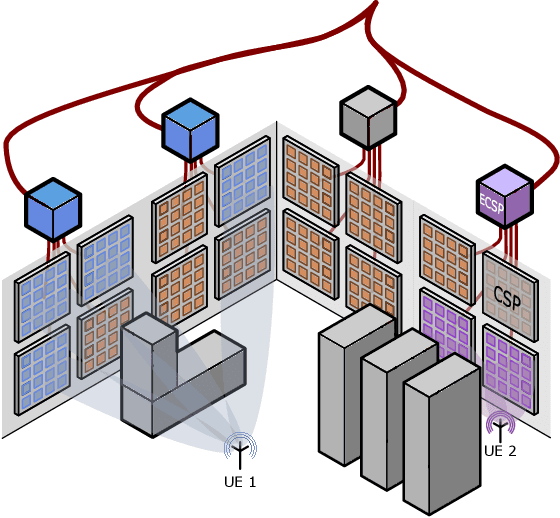
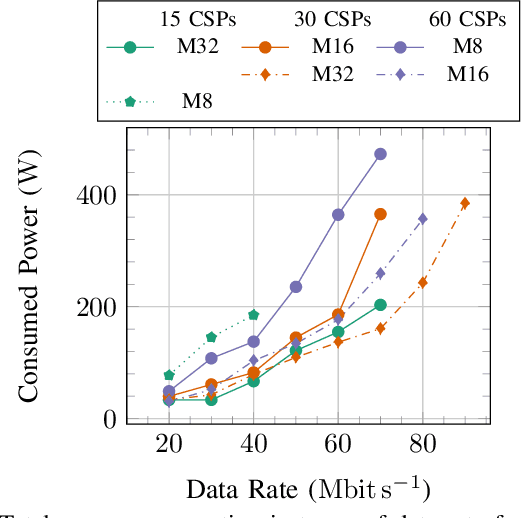
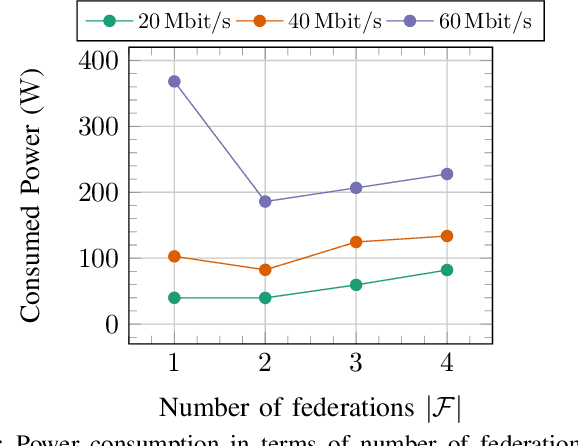
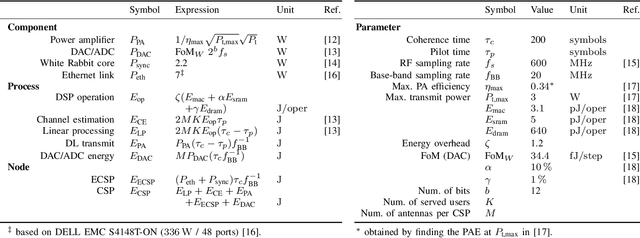
Abstract:The physical layer foundations of cell-free massive MIMO (CF-mMIMO) have been well-established. As a next step, researchers are investigating practical and energy-efficient network implementations. This paper focuses on multiple sets of access points (APs) where user equipments (UEs) are served in each set, termed a federation, without inter-federation interference. The combination of federations and CF-mMIMO shows promise for highly-loaded scenarios. Our aim is to minimize the total energy consumption while adhering to UE downlink data rate constraints. The energy expenditure of the full system is modelled using a detailed hardware model of the APs. We jointly design the AP-UE association variables, determine active APs, and assign APs and UEs to federations. To solve this highly combinatorial problem, we develop a novel alternating optimization algorithm. Simulation results for an indoor factory demonstrate the advantages of considering multiple federations, particularly when facing large data rate requirements. Furthermore, we show that adopting a more distributed CF-mMIMO architecture is necessary to meet the data rate requirements. Conversely, if feasible, using a less distributed system with more antennas at each AP is more advantageous from an energy savings perspective.
An Open Dataset Storage Standard for 6G Testbeds
Nov 05, 2023

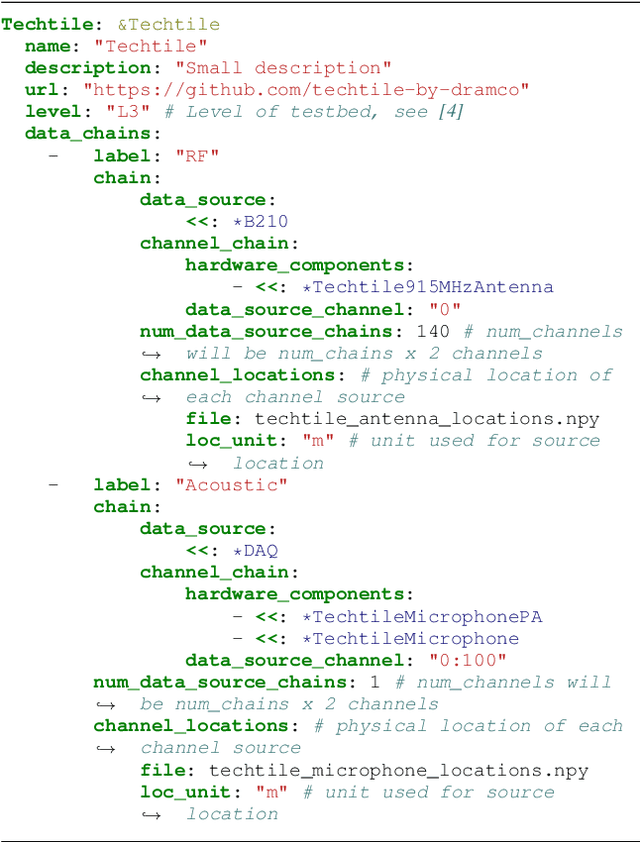

Abstract:The emergence of sixth-generation (6G) networks has spurred the development of novel testbeds, including sub-THz networks, cell-free systems, and 6G simulators. To maximize the benefits of these systems, it is crucial to make the generated data publicly available and easily reusable by others. Although data sharing has become a common practice, a lack of standardization hinders data accessibility and interoperability. In this study, we propose the Dataset Storage Standard (DSS) to address these challenges by facilitating data exchange and enabling convenient processing script creation in a testbed-agnostic manner. DSS supports both experimental and simulated data, allowing researchers to employ the same processing scripts and tools across different datasets. Unlike existing standardization efforts such as SigMF and NI RF Data Recording API, DSS provides a broader scope by accommodating a common definition file for testbeds and is not limited to RF data storage. The dataset format utilizes a hierarchical structure, with a tensor representation for specific experiment scenarios. In summary, DSS offers a comprehensive and flexible framework for enhancing the FAIR principles (Findability, Accessibility, Interoperability, and Reusability) in 6G testbeds, promoting open and efficient data sharing in the research community.
Dynamic Federations for 6G Cell-Free Networking: Concepts and Terminology
Apr 05, 2022Abstract:Cell-Free networking is one of the prime candidates for 6G networks. Despite being capable of providing the 6G needs, practical limitations and considerations are often neglected in current research. In this work, we introduce the concept of federations to dynamically scale and select the best set of resources, e.g., antennas, computing and data resources, to serve a given application. Next to communication, 6G systems are expected to provide also wireless powering, positioning and sensing, further increasing the complexity of such systems. Therefore, each federation is self-managing and is distributed over the area in a cell-free manner. Next to the dynamic federations, new accompanying terminology is proposed to design cell-free systems taking into account practical limitations such as time synchronization and distributed processing. We conclude with an illustration with four federations, serving distinct applications, and introduce two new testbeds to study these architectures and concepts.
 Add to Chrome
Add to Chrome Add to Firefox
Add to Firefox Add to Edge
Add to Edge